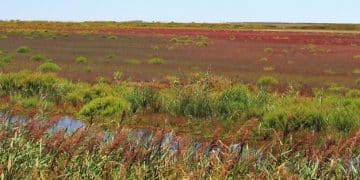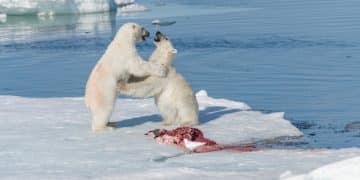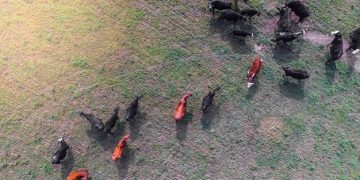Protected Areas: New Research on Biodiversity Conservation in the US
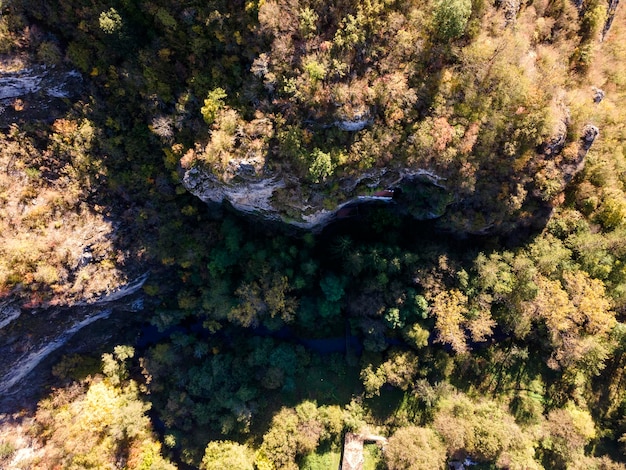
New research highlights the crucial role of protected areas in the United States for conserving biodiversity, showcasing their effectiveness in safeguarding species and habitats against increasing environmental pressures.
New Research: The Role of Protected Areas in Conserving Biodiversity Across the US unveils the significant impact these designated zones have on maintaining ecological balance. As habitats face mounting threats, understanding the contribution of protected areas becomes increasingly crucial for effective conservation strategies.
The Critical Role of Protected Areas in Biodiversity Conservation
Protected areas such as national parks, wildlife refuges, and conservation easements are cornerstones of biodiversity conservation efforts. They provide habitats that safeguard a multitude of species and ecosystems. These areas are designed to mitigate the impact of human activities, offering refuge for both flora and fauna.
Understanding the effectiveness of these areas is crucial for enhancing conservation strategies. Recent research sheds light on how protected areas contribute to the overall health and resilience of the environment, highlighting their importance in a rapidly changing world.

The Importance of Habitat Preservation
Habitat preservation is one of the primary functions of protected areas. By safeguarding natural environments, these areas provide essential resources for a wide variety of species. They prevent habitat loss resulting from deforestation, urbanization, and agricultural expansion.
These protected spaces also play a crucial role in maintaining ecological processes, like pollination and seed dispersal, which are essential for the health and sustainability of ecosystems.
- Protecting endangered species habitats.
- Maintaining natural ecosystems for ecological balance.
- Reducing the impact of human activities on wildlife.
- Preserving genetic diversity within species.
Effective habitat preservation strategies require ongoing monitoring and adaptive management practices. Conservation managers must continually assess the health of protected areas, adapting their methods to address emerging challenges, such as climate change and invasive species.
In conclusion, preserving habitats within protected areas is vital for biodiversity conservation. By understanding and managing these habitats effectively, conservationists can ensure the long-term survival of numerous species and the ecological integrity of natural ecosystems in the US.
New Research Findings on Conservation Effectiveness
Recent research provides valuable insights into how well protected areas achieve their conservation objectives. The studies focus on assessing the biodiversity, ecosystem services, and ecological integrity within the areas.
Analyzing these findings helps us understand the strengths and weaknesses of current conservation strategies. It also allows for refining management practices to improve the effectiveness of protected lands.
Assessing Biodiversity within Protected Areas
One of the key goals of protected areas is to maintain and enhance biodiversity. Researchers employ various methods to measure the species richness, abundance, and genetic diversity within these regions. These data provide a baseline for evaluating ecological health.
By monitoring biodiversity, scientists can identify areas that are particularly important for conservation and those that may require additional management interventions.
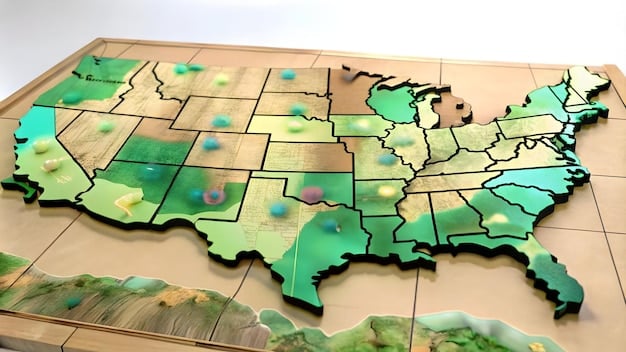
Impact of Protected Areas on Ecological Health
Studies show that protected areas often exhibit higher levels of biodiversity compared to non-protected areas. This disparity can be attributed to restrictions on unsustainable resource extraction, reduced habitat fragmentation, and active conservation efforts.
These research outcomes underscore the importance of establishing and maintaining a network of protected sites across diverse ecosystems.
- Increased species richness in protected forests.
- Higher population densities of endangered animals.
- Improved water quality in protected watersheds.
- Greater resilience to environmental changes.
Scientific findings regarding conservation effectiveness play a vital role in shaping the future of protected area management. By understanding the impact of these areas, policymakers and conservationists can make informed decisions. These actions ensure the preservation of biodiversity and ecosystem health in the face of ongoing environmental challenges.
Overall, new research confirms the essential role of protected areas in preserving biodiversity and maintaining ecological integrity. It provides evidence-based insights for improving conservation practices and strengthening the network of protected lands across the United States.
Challenges Faced by Protected Areas
Despite their importance, protected areas face numerous challenges that can undermine their effectiveness. These challenges range from external threats to internal management issues.
Addressing these difficulties is crucial for ensuring that protected areas continue to fulfill their role in biodiversity conservation.
External Threats: Climate Change and Habitat Fragmentation
Climate change poses a significant threat to protected areas. Altered temperature and precipitation patterns can shift species distributions, disrupt ecological processes, and increase the risk of extreme events such as wildfires and floods.
Habitat fragmentation, resulting from urbanization and agriculture, can isolate protected areas and reduce their ability to support viable populations of many species.
Additionally, invasive species can outcompete native flora and fauna, altering ecosystems and threatening biodiversity. These species can quickly colonize fragmented habitats, further degrading their ecological integrity.
- Mitigating habitat loss due to urban expansion.
- Controlling the spread of invasive plants and animals.
- Implementing climate change adaptation strategies.
Effective management of protected areas requires addressing these external threats and implementing adaptive strategies to strengthen their resilience. By proactively managing these challenges, conservationists can safeguard the biodiversity and ecological health of these vital spaces.
Internal Management Issues: Funding and Resources
Many protected areas suffer from insufficient funding and resources, which limits their ability to effectively monitor and manage the region. This can lead to inadequate staffing, insufficient equipment, and a lack of capacity for research and conservation activities.
Limited resources can hinder the enforcement of regulations, allowing for illegal activities such as poaching, logging, and unauthorized development to occur, undermining the conservation goals of the area.
Furthermore, conflicts between different stakeholders, such as local communities and conservation organizations, can arise over resource use and management decisions, potentially hindering conservation efforts.
In summary, addressing the challenges faced by protected areas requires a comprehensive and collaborative approach. By mitigating external threats and resolving internal management issues, conservationists can enhance the effectiveness and long-term sustainability of these crucial regions for biodiversity conservation.
Strategies for Enhancing Conservation Effectiveness
To maximize the benefits of protected areas, it’s important to implement strategies that enhance their conservation effectiveness. Strategies include adaptive management and community involvement.
These strategic enhancements strengthen the role of protected areas in conserving biodiversity and supporting broader sustainable development goals.
Adopting Adaptive Management Practices
Adaptive management involves monitoring and adjusting management strategies based on the outcomes. This iterative process allows conservation managers to respond effectively to changing conditions and new information.
By continually evaluating and refining management practices, protected areas can improve their conservation performance and adapt to emerging challenges.
- Regular monitoring of species populations and habitat health.
- Adjusting management practices based on monitoring results.
- Incorporating new scientific knowledge and best practices.
- Promoting collaboration among researchers and managers.
The flexibility and responsiveness of adaptive management make it an essential tool for ensuring the long-term conservation effectiveness of protected areas. By embracing this approach, conservationists can enhance the ecological integrity of these areas and support the preservation of biodiversity.
Engaging Local Communities in Conservation Efforts
Engaging local communities in conservation efforts is crucial for fostering a sense of ownership and stewardship. By involving local people in the planning and management of protected areas, conservationists can gain valuable insights and support for their efforts.
Community engagement can take various forms, including joint management agreements, revenue-sharing arrangements, and conservation education programs.
These collaborative partnerships can strengthen the social and economic benefits of protected areas while promoting biodiversity conservation and sustainable resource management.
In conclusion, strategies for enhancing conservation effectiveness rely on a combination of adaptive management practices and community engagement. Focusing on these strategies ensures these areas make the greatest contributions to biodiversity and broader sustainability goals.
Policy Recommendations for Strengthening Protected Areas
To reinforce the role of protected areas in biodiversity conservation, it’s vital to implement supportive policies at the local, national, and international levels.
These policy recommendations offer guidance for improving the management, funding, and governance of protected areas, strengthening their contribution to biodiversity conservation.
Increasing Funding for Protected Area Management
Securing adequate funding for protected area management is essential for ensuring the capacity of these areas to fulfill their conservation goals. Governments, philanthropic organizations, and private donors should increase their investments in protected area management.
These funds can be used to support ecological monitoring, habitat restoration, ranger patrols, and community outreach programs.
By raising the level of financial support, protected areas are better equipped to address challenges such as poaching, illegal logging, invasive species, and climate change.
- Lobbying for increased government funding.
- Seeking grants from philanthropic organizations.
- Establishing sustainable revenue-generating mechanisms.
Elevating funding levels allows protected area managers to implement effective conservation strategies and ensure the long-term survival of biodiversity in protected landscapes.
Strengthening Legal Frameworks for Protected Area Management
Strengthening legal frameworks is vital for clarifying the mandates, responsibilities, and powers of protected area managers. Governments should enact and enforce laws that protect the boundaries, ecological integrity, and biodiversity of protected areas.
These legal frameworks should address issues such as land use planning, resource extraction, and development activities within and around protected areas.
They should also provide mechanisms for resolving conflicts between different stakeholders and penalizing illegal activities that threaten the conservation goals of protected areas.
Robust legal frameworks are the foundation for ensuring that protected areas are effectively managed and that their biodiversity is safeguarded for future generations.
In summary, policy recommendations for strengthening protected areas emphasize increased funding and robust legal frameworks. By implementing these policy actions, governments can strengthen the role of protected areas in conserving biodiversity and promoting sustainable development.
Future Directions for Protected Area Research
As environmental challenges mount, continuing research into the role of protected areas is critical. Such research helps improve management practices and contribute to global conservation.
Exploring future research directions strengthens our understanding of these conservation tools and supports biodiversity preservation.
Investigating the Impact of Climate Change on Protected Areas
Further research is needed to understand the cascading effects of climate change on protected areas. Studies should investigate how altered temperature and precipitation patterns are affecting species distributions, ecosystem processes, and habitat suitability within protected landscapes.
This research should also focus on identifying strategies for enhancing the resilience of protected areas to climate change. Strategies can include habitat restoration, assisted migration of species, and adaptive management practices.
- Studying the effects of extreme events on biodiversity.
- Modeling future climate scenarios and their impacts.
- Developing strategies for mitigating climate risks.
By deepening our knowledge of climate change impacts, we can better prepare protected areas to conserve biodiversity in a rapidly changing world. This allows for a data-driven response to environmental shifts.
Exploring New Technologies for Monitoring Biodiversity
Advancements in technology offer powerful tools for monitoring biodiversity within protected areas. Researchers should explore the use of remote sensing, drones, acoustic monitoring, and eDNA analysis to track changes in species populations and ecosystem health.
These technologies can provide real-time data on biodiversity trends, allowing for early detection of threats and adaptive management responses. They can also reduce the costs and logistical challenges associated with traditional monitoring methods.
By adopting these cutting-edge tools, researchers and managers can improve the efficiency and effectiveness of biodiversity monitoring in protected areas.
In conclusion, future research directions for protected areas focus on climate change impacts and technological innovations. The data gathered informs management practices and strengthens the conservation efforts across protected areas worldwide.
| Key Point | Brief Description |
|---|---|
| 🏞️ Habitat Preservation | Safeguarding natural environments for species and ecosystems. |
| 📊 Conservation Effectiveness | Assessing biodiversity and ecological integrity within protected areas. |
| 🌍 Climate Change Adaptation | Adjusting management practices to climate change impacts. |
| 🤝 Community Engagement | Involving local communities for stewardship and support. |
Frequently Asked Questions
▼
Protected areas are designated zones that safeguard biodiversity and ecological processes. They are vital for preserving species, maintaining ecosystem health, and mitigating human impacts on natural environments.
▼
By preserving habitats, reducing habitat fragmentation, and restricting resource extraction, protected areas provide refuge for various species, support ecological balance, and maintain genetic diversity, thus conserving biodiversity.
▼
Protected areas often face challenges such as climate change, habitat fragmentation, invasive species, insufficient funding, and resource limitations that threaten their effectiveness and conservation goals.
▼
Strategies to enhance conservation include adaptive management practices, monitoring and adjusting management strategies, engaging local communities, and fostering a sense of ownership and stewardship.
▼
Policy recommendations include increasing funding for protected area management, implementing and enforcing laws that protect the boundaries, addressing conflicts, and robust legal frameworks that safeguard biodiversity.
Conclusion
New research underscores the vital role of protected areas in conserving biodiversity across the US. By addressing challenges, implementing strategic enhancements, and adopting supportive policies, we can ensure these areas continue to safeguard species, maintain ecological health, and support broader sustainability goals, thus preserving our natural heritage for future generations.
